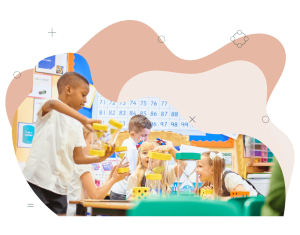31 Introduction to assessing learning outcomes
Key ideas
- Learning outcomes are essential in effective assessment approaches
- Curriculum areas provide different ways of looking at assessment
- Assessing play abilities and the noticing the levels of play skills that children engage in
As children play they develop a range of skills and abilities, this chapter privileges different areas of learning and development. It also considers how the assessment methods that teachers use support clarity around learning out comes as well as an intentional approaches to interactions, questions and resources. Planning and designing environments around learning goals is an important part of play-based approaches and the interactions and collaborations with students can promote further learning.

How are learning goals used in a play-based approach
Learning goals are at the centre of a play-based approach. Through your interactions with students in their play-based experiences, you’re able to redirect and/or refocus students’ actions, efforts and activity towards a clear outcome that aims to achieve the set learning goal. Teachers can also choose to encourage and support students to take responsibility for their learning by contributing to the goal setting of their own learning (McBlain, 2014). For example, during a play experience, you can give students set tasks that require them to record their findings or write a narrative about their activity. Such documentation in hard copy form, provides an authentic opportunity to provide formal written feedback to students on their playful learning.
Keep in mind
Play the below Engaging with this chapter video podcast (1:56). As you listen to this chapter’s detailed exploration of assessment and its connection to learning outcomes in play-based approaches, consider how this builds on the previous chapter.

